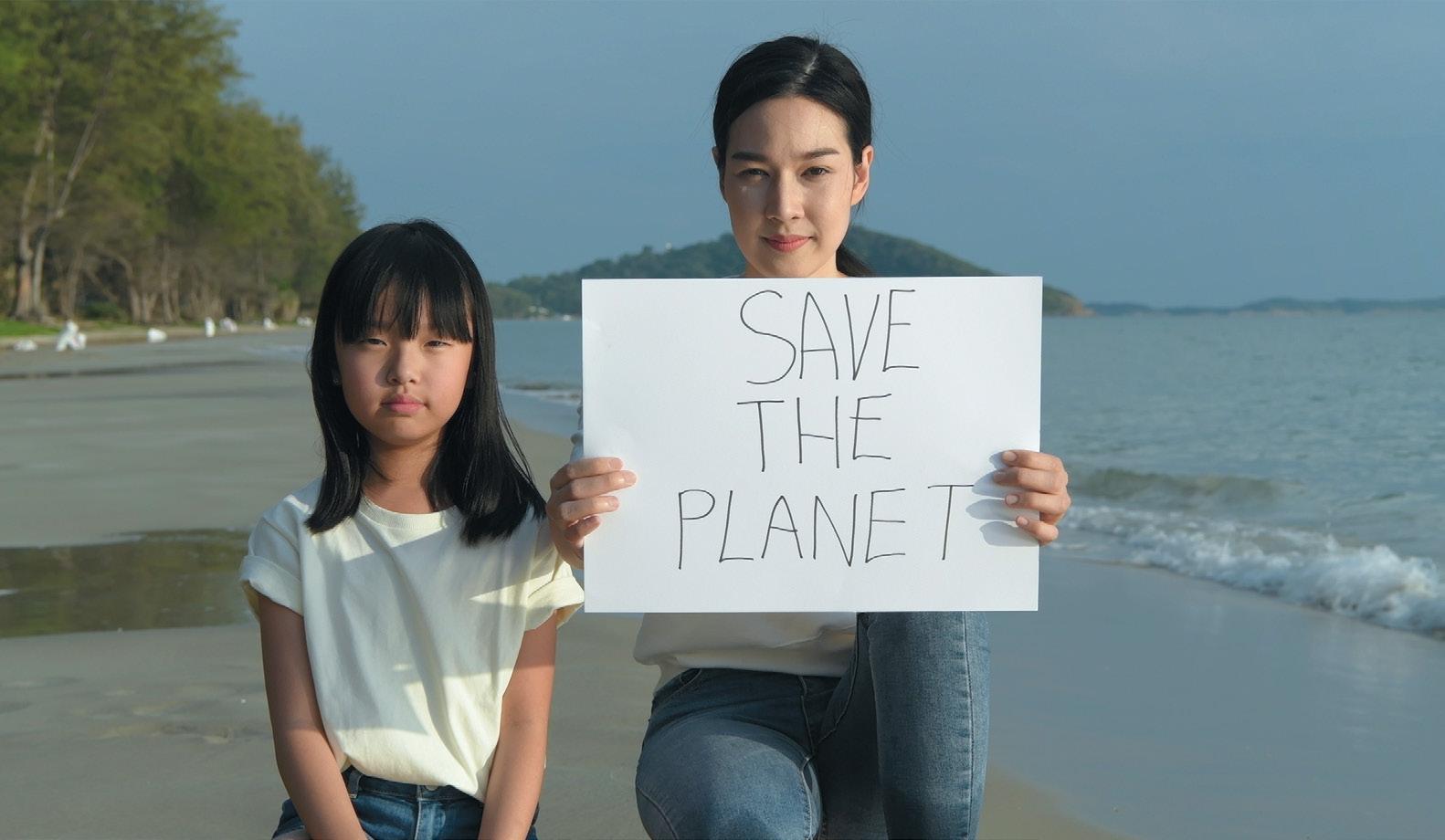
4 minute read
TALKING TO KIDS ABOUT CLIMATE CHANGE
What They Need to Know from Those They Trust
by Sandra Yeyati
Advertisement
As scientists have been predicting, climate-related fires, floods and drought are becoming commonplace. Our children are seeing and hearing about them on social media and the news or living through them in their own neighborhoods. Kids have questions. They’re afraid, anxious and angry about inheriting these problems.
“We’re living a climate emergency, so we should talk about it honestly with our children whenever they ask us. They deserve to hear it from trusted messengers, the people they know and love, such as parents, guardians and teachers,” says Harriet Shugarman, the New York City author of How to Talk to Your Kids About Climate Change: Turning Angst into Action, who trained with Al Gore’s Climate Reality Project and founded the online community ClimateMama.com.
Fostering a Love of Nature
For our youngest children, “You want to be calming and reassuring, engendering a sense of safety and love of nature. This is the time to go outside and connect with the many delights of our world,” says integrative psychotherapist Leslie Davenport, the San Francisco author of All the Feelings Under the Sun: How to Deal with Climate Change, an illustrated book for 8-to-12-year-olds published by the American Psychological Association.
United Kingdom-based children’s book author Catherine Barr offers a gentle and enjoyable way to develop love and concern for nature in her 10 Reasons to Love picture book series that showcases endangered animals. “When talking to children that young, it’s important to present climate issues in positive ways, encouraging kindness, inclusivity, empathy and understanding,” says the former Greenpeace campaigner. “Young children are so impressionable. It’s best to empower them with hope than scare them unnecessarily.”
Still, Shugarman notes, “It’s not too young to say that we turn off lights when we leave a room to save energy. Sometimes our kids think that fruit comes
Learning the Facts Together
According to Davenport, as kids reach 9 and beyond, they tend to be mentally and emotionally capable of processing more complex concepts and emotions. This is the time for parents to present vetted, science-based facts as objectively as possible. “There’s a tendency to want to either sugarcoat or over-dramatize. We flip from ‘It’s not so bad; it’ll be fine’, to ‘It’s too late; there’s nothing I can do.’ Neither of those views are helpful or accurate,” she explains.
Barr recommends that parents stick to the facts and encourage curiosity. “Parents shouldn’t feel that they have to have all the answers. It can be a journey of learning with your children to look something up together,” the author of The Story of Climate Change advises. “It’s also a good idea to empower kids to challenge grownups. A child can start a conversation at the dinner table by asking, ‘Where did this fish come from?’ or ‘Could we grow our own carrots?’ or ‘Are we recycling?’”
Building Resiliency
Davenport’s book toggles between the presentation of environmentally triggered realities and calming, reflective exercises such as journaling or deep breathing. “The idea is that when you hear difficult news or have a difficult experience, you go back and forth between talking about or processing it and something that helps you regulate or calm your nervous system,” she explains. This approach helps to build resiliency, which Davenport defines as the capacity to stay present, openminded, open-hearted and clear in the face of life’s challenges.
Finding Hope in Action
“We can give our kids hope by pointing to people that are working to address the climate crisis, including the uprise of youth voices, as well as efforts to save animal species, build resiliency in cities and reduce greenhouse gas emissions,” says Shugarman. “It’s also critical that parents show their kids that they care about the crisis and are doing things like reducing energy use, driving electric cars, voting for pro-climate candidates and supporting climate education in schools.”
“People think you have to talk about how awful the world is going to be, but I think you can turn that upside-down and offer a strong, positive message of hope,” says Barr. “We need to help kids understand that the choices they make and the things they do can lead to a more sustainable, fairer way of living.”
“According to climate scientists, if we don’t do anything, we’re in big trouble, and if we intervene and make significant changes, we’re still going to feel impacts, but it’s not too late,” says Davenport. “Encourage kids to become part of meaningful change. Our actions make a difference.”
Sandra Yeyati, J.D., is a professional writer and editor. Reach her at SandraYeyati@ gmail.com.
Susane Grasso
R E IK I MASTE R

Relaxation Therapy Chakra Balancing Aura Readings
203.500.6950
DISTANCE REIKI AVAILABLE
2 IMPORTANT QUESTIONS TO ASK WHEN SEEKING A PHYSICAL THERAPIST coming in november
1. Will my PT work ONLY with me during my treatment?
2. Will I ONLY be doing exercises during my treatment?

ABSOLUTELY! At Physical Therapy Services of Guilford, we are one of the few remaining practices that spend 40 minutes, one-on-one, with YOU and ONLY YOU.
No. Your physical therapist will be using hands-on techniques to relieve your pain and will provide you with exercises to do at home.
Conscious Dying plus
Brain Health
Physical Therapy Services of Guilford • 500 East Main Street • Branford 203-315 7727 • PhysicalTherapyGuilford.com






